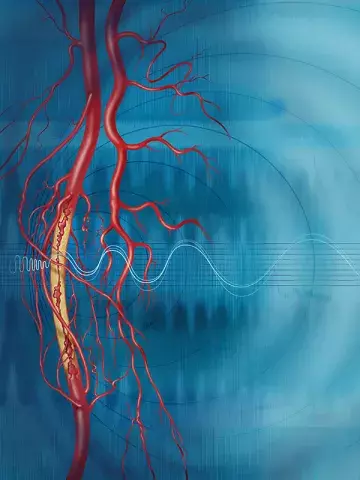Review finds peripheral artery disease underdiagnosed and undertreated in women
By Melanie Hinze
Peripheral artery disease (PAD) appears to be a silent problem in women, making diagnosis very difficult, an Australian expert has told Medicine Today.
Associate Professor Mary Kavurma, Associate Director of Research and Education at the Heart Research Institute, Sydney, was one of two lead authors on a paper, published in the European Heart Journal – Quality of Care and Clinical Outcomes, that aimed to highlight gender-related inequalities in the diagnosis, treatment and management of PAD.
‘The most important evidence to highlight is that women tend to have atypical symptoms or no symptoms, making diagnosis difficult,’ she said. ‘Furthermore, women are more likely to have worse outcomes to treatment.’
The study authors conducted a scoping review using the WHO model for analysis of gender-related needs in healthcare. They found that women with PAD were twice as likely as men to present with chronic limb-threatening ischaemia and less likely than men to present with intermittent claudication. They also noted that treatments for PAD were largely developed in men, and were less effective in women. The review highlighted the complex biological, clinical and societal variables that were linked to gender-related inequalities in the diagnosis, treatment and management of PAD.
Professor Kavurma, who is also Associate Professor at The University of Sydney, Sydney, told Medicine Today that GPs were often the first point of contact for patients with PAD and as such there were several points they could consider, including:
- checking for PAD in women presenting with calf pain
- asking women if they have ever suffered from calf pain
- informing patients about PAD to increase awareness in all patients, not just women
- keeping up to date with the current guidelines and literature as details often change.
‘By keeping up to date with the literature being aware of PAD, GPs can absolutely reduce any gender inequalities in PAD,’ she said. However, she added that there was still much we do not know.
‘There is a need for a deeper understanding of the role atherosclerotic diseases play in women, to evaluate why we are currently failing to address the health outcome gaps between genders and to develop more nuanced and efficacious methods of treatment that are targeted towards the specific needs of women,’ she said.
‘To do this, we need to have a better understanding of the biology, which will provide the foundations and solutions for improved diagnoses and treatment,’ she added.
Eur Heart J Qual Care Clin Outcomes 2023; 0: 1–9; https://doi.org/10.1093/ehjqcco/qcad011.


